Post-HFSS, bigger packs and food-to-go is fuelling category growth
1. HFSS regs have changed the snack game
2. Leading snack suppliers are investing heavily in HFSS-compliant innovation
3. Consumers are going nuts for bold flavours
4. Crisps, snacks and nuts is growing 10.7% year-on-year
5. Hybrid working is helping on-the-go snack sales
6. Bigger format PMPS are now winning out
7. Meat-free snacking has grown by a fifth (20%) in the past two years
8. Ambient protein meat snacking category is growing at 26% in convenience YTD
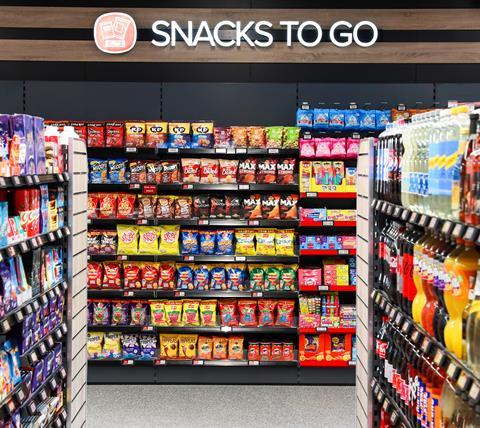
1. HFSS regs have changed the snack game
For many c-stores savoury snacks used to be a no-brainer: simply stack ‘em high, flag up new flavours and wait for hungry shoppers to clear your shelves. But that was until the first tranche of HFSS (high in sugar, salt and fat) laws came into force last October.
From that date, convenience retailers falling within the scope have suffered serious restrictions as to where they can place snacks deemed HFSS. That meant a major re-think on space.
Chloe Taylor-Green from Spar Western Downs in Stafford, returned from maternity leave to find many of her store’s HFSS lines had been relocated.
“Obviously the stock that we used to have on gondola ends now goes in the aisles where we can – and we use troughs around the store,” she says. “But we used to have space for much more variety, and we’ve lost those important promotional areas.” However, despite the faff, the new rules haven’t been a disaster for the store’s snack sales. Chloe reckons that demand is still strong, wherever stock is in store.
“I can see that people are now used to shopping in this new way around the shop,” she says.
“If customers come in for something like a packet of crisps for the kids’ lunchboxes then they’re going to buy it regardless of where it is in the store.”
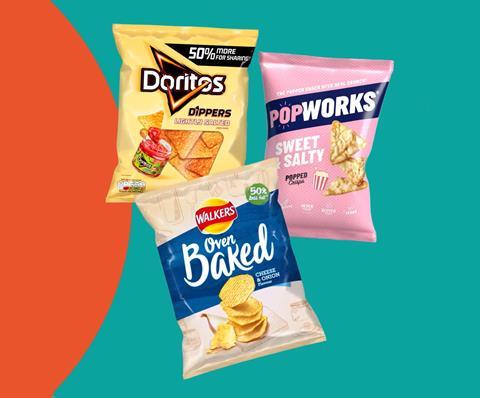
2. Leading snack suppliers are investing heavily in HFSS-compliant lines
Snack brands haven’t been slow in reformulating ranges to gain sales space in the post-HFSS world. For example, Matt Collins from KP says that it now offers over 100 non-HFSS SKUs across brands like Tyrells, Popchips, Hula Hoops Puft and Penn State – equivalent to a quarter of its portfolio.
Meanwhile, PepsiCo has just announced that 30% of Walkers sales are now from healthier snacks. The firm has made a three year investment of £35m to support plans for half of Walkers snack sales to come from healthier alternatives by 2025, with 30% to come from products that do not classify as HFSS and 20% to be from snacks sold in portions of 100 Calories or less per packet.
Non-HFSS snacks now account for 15% of Walkers’ overall sales, and portions of 100 Calories or less account for a further 15% of sales. Two-thirds of all new products launched last year were not classified as HFSS.
The legislation has opened up opportunities for new brands that score on both health and flavour, claims Epicurium. “HFSS has, if anything, been a positive factor for challenger and healthier brands – with the shift away from gondola ends the smaller brands are able to compete on a level playing field with the big boys, and they’ll often win on shelf with more eye-catching branding and products benefits that connect with shoppers lifestyles,” says Ben McKechnie, managing director at Epicurium.
One healthy brand hoping to capture consumers imaginations is Chika’s Snacks Popped Rice Crisps, which see salt swapped with spice. “We’ve seen sales of our snacking range up by 38% year-on-year, with heightened demand for our new non-HFSS Popped Rice Crisps,” says managing director Scott Cooper. “When it comes to flavour, it’s all about ‘big and bold’, as HFSS compliance has seen salt replaced with spice to create healthier snacks that are bursting with flavour. Sweet Chilli and Barbecue are leading the way across our new Rice Crisps range, showing demand for bigger, bolder flavours.”
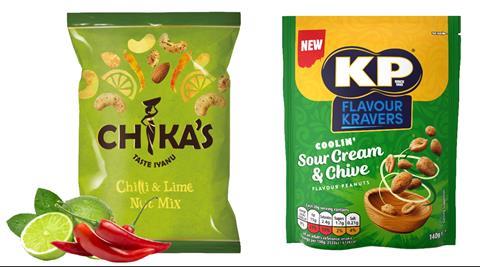
3. Consumers are going nuts for bold flavours
While many snacks have been forced to reformulate, nuts were not impacted by the HFSS regulations. “Nuts have been recognised for their natural credentials and the important part they have within a healthy, sustainable diet and are therefore excluded from HFSS legislation,” says Matt Collins, trading director at KP Snacks. Launched last year, the brand’s Nuts Flavour Kravers is bringing younger, bold-flavour-seeking shoppers into the nuts segment and the firm has recently added a Sour Cream & Chive variant.
The dual appeal of natural health benefits and bold flavours is also working a treat for Chika’s Snacks’ nut range. “When it comes to healthier snacking, nuts have an advantage from the off, as they’re naturally nutritious and packed full of protein and fibre,” says managing director Scott Cooper.
“There’s a huge (and growing) community of snackers on the lookout for natural, wholesome, gluten-free snacks, and this is what nuts can deliver. Ours are also baked (not fried) with no added oil, which appeals to snackers looking for healthier options.
“We’re also seeing growth in demand for bigger, bolder flavours, with our Chilli and Lime Nut mix selling particularly well. Not only does the flavour pack a punch, but they’re also bursting with healthful spices such as Cayenne, Cardamom, Ginger, and Cumin.”
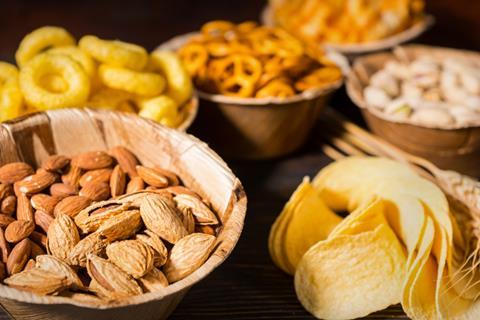
4. Crisps, snacks and nuts is growing 10.7% year-on-year
Snack-hungry shoppers have always been a mainstay of the c-store sector. And after a couple of years where Covid dulled on-the-go appetites, they’re now back buying savoury treats: big-time.
“[2022] was a year of two halves with sales really taking off from May in line with when London commuters started to return to the office in more significant numbers,” says McKechnie.
“By October, sales of all categories reached significantly above pre-covid levels. [However] while cost-of-living pressures didn’t really hit premium brands until the end of the year, we have seen shoppers be more selective and considered in 2023.”
Tayto Group has also witnessed a step back from premium crisp brands. “Despite the price hikes, snacks remain an affordable treat but consumers are buying into what is good relative value,” says marketing director Matt Smith. “Hand Cooked Crisps is the starkest example – the price gap between brands and private label has grown and branded promotions have reduced in depth and frequency, leading to branded volume dropping by over 20% whilst PL volume has grown by c15%.”
Despite this new-found pickiness on premium, Collins is buoyant about the category’s future.
“CSN is a fast growing, priority category with huge scale,” he says.
“We’re seeing dynamic change across the category, and retailers can bank on bagged snacks to drive sales and footfall by stocking the right range and formats.”
In fact, crisps, snacks and nuts is growing 10.7% year-on-year in the total market (Nielsen).
ADVERTISEMENT
Get Flavourful with McCoy’s Epic Eats
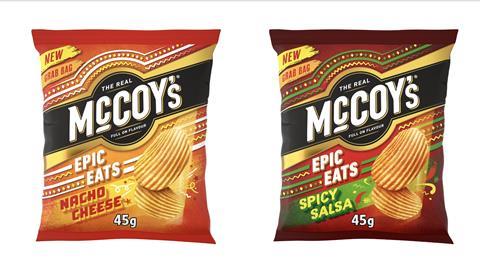
McCoy’s Epic Eats are a new product range for the UK’s number one ridged crisp brand. Delivering on McCoy’s unmistakable bold flavour, the range features two new irresistible products, Nacho Cheese and Spicy Salsa.
Launched earlier this year, the McCoy’s Epic Eats range delivers unique and tempting flavours and promises an epic snacking experience for shoppers looking to try something new. McCoy’s Epic Eats has been designed to excite the category and bolster growth of the McCoy’s brand, while strengthening its flavour credentials.
With younger consumers significantly influenced by flavours when making purchasing decisions, the new range is perfectly positioned to attract younger shoppers to the category and the brand to drive penetration within this demographic.

5. Hybrid working is helping on-the-go snack sales
As McKechnie notes, the return of post-Covid commuting is a huge driver behind the snack bounce-back.
“Key to [improved sales] was the reappearance of ‘Food to go’,” he says. “Hybrid working meant that consumers are looking for quick eats when at home and more health-focused premium food-to-go options when in the office.”
Chloe says that the appearance of a good deal, and stocking the right brands, is key to winning with food-to-go. “Crisps are a huge part of our meal deals,” she says. “Customers know that most of the time it’s cheaper to buy our meal deal than it is to buy a bottle of pop, some sandwiches and some crisps. But it’s important to have a decent level of ranging in there too.”
“Food to Go is a long-term, resilient growth trend,” adds Collins. “The category is showing strong recovery and we expect the market to rebound as footfall and frequency continue to rise.”
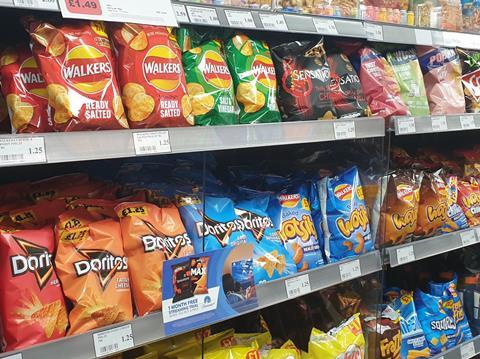
6. Bigger format PMPS are now winning out
Crisps are a great example of just how much prices have risen in the last few years. While £1 PMPs were once the norm, now it’s the £1.25 PMP format that dominates the sector.
Retailers report that the larger-size 70g packs help shoppers feel they’re getting value for money.
“A couple of years ago we got rid of all the single packets [of crisps] and now we just do the big packs that are £1.25 – I’ve got a one-metre bay full of them,” says Hazel Ridge from Bassett’s Londis Weymouth.
“I just think that the singles would hang around if they weren’t in our meal deal. When customers walk into a store they’re not going to buy the smaller bag, they want to trade up.”
“People now buy the bigger packs as standard,” adds Chloe.
“For the sake of a few pence more they just feel that they’re getting a better buy.”
KP Snacks’ portfolio of large PMPs is currently worth £97.3m RSV, and is growing at +45.9% (Nielsen). Last year, the firm launched a large format £1.25 PMP on Nik Naks Scampi ‘N’ Lemon, bolstering the £39.1m brand (ibid), which is growing strongly at +60% (ibid).
However, Golden Wonder remains committed to its £1 pricemarked range, which includes 65g packs of crisps and 56g Transform-a-Snack packs. The firm claims that the PMP range is outperforming the market in indies and symbols (+22.6% vs +9.9%) (IRI), with Transform-A-Snack being the star performer (+42%) (ibid). “In the current climate, consumers are feeling the pinch and independent retailers need to showcase great value for money,” says Smith. “Convenience shoppers worry that they will pay more for shopping locally and PMPs give them confidence that they are not being ripped off. That’s why PMPs have increased to 75% of snacks sales in Symbols & Indies [Norstat May 22].”
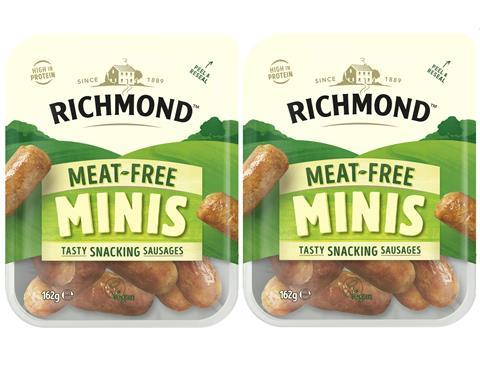
7. Meat-free snacking has grown by a fifth (20%) in the past two years
Want proof that meat-free snacking has now entered the mainstream? Just take a look at how fast traditional meat brands are entering the market.
The latest to do so is Richmond, which released new Meat-free Minis to the market in April.
“Our loyal Richmond customers have been asking us for a meat-free snack that delivers on taste and texture – where our competitors often fall flat – because they trust us to deliver in meat-free,” says Chris Doe, marketing controller at Pilgrim’s Food Masters.
Meat free snacks are now worth £30m (+20% YOY) (IRI) and most of the branded growth (61%), is driven by brands with both meat and meat-free offerings (IRI), notes Richmond.
Another plant-based area showing promise is cheese alternatives.
“The plant-based alternatives to cheese category is worth £174m, equating to almost a fifth of the dairy alternatives category [Kantar],” says senior brand manager Oliver Richmond, senior brand manager at Be UK.
“Babybel Plant-Based was launched following overwhelming demand for the development of a vegan friendly Babybel over the years and has now reached over £1m value sales.”
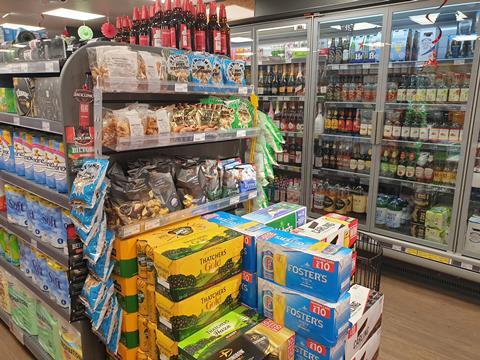
8. Ambient protein meat snacking category is growing at 26% in convenience YTD
Meaty snacks will always be part of the c-store mix – especially as an accompaniment to alcohol. Shaun Whelan, Jack Link’s convenience/wholesale and ooh controller, says that the key shopper for this category is male, between 16-45 with a keen interest in sports and healthy eating.
“More importantly, these shoppers are willing to pay more for this product than traditional crisps and snacks,” he says.
“This [category] is driven by fast increasing demand for high protein meat snacks, from consumers seeking healthier alternatives to more traditional snacks like crisps and nuts.
“Key to building a strong range of ambient protein meat snacks is to ensure visibility of the bestselling packs of Jack Link’s Beef Jerky Original 25g on clip strips. There are also two more great tasting flavour packs of Beef Jerky available: Sweet & Hot and Teriyaki, plus 25grm Biltong.”
For meat snacks, visibility is essential – which is where clip strips can come into their own to prompt what Whelan identifies as “unplanned incremental purchase”.
Hazel squeezes every inch of sales from meat snacking by ensuring visibility near alcohol.
“I do things like double-filling [meat snacks] with the crisps and also making sure products like beef jerky and pork scratchings are near the wine and beer. It’s obviously the kind of thing you want to snack on when you’re having a drink!”




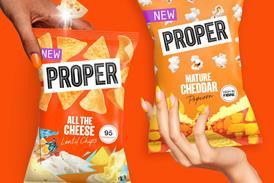






![WG-4003[58]](https://d2dyh47stel7w4.cloudfront.net/Pictures/274x183/4/5/1/353451_wg400358_6083.jpg)




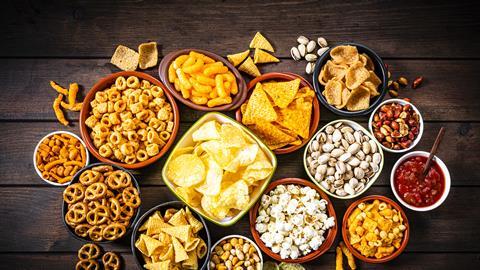
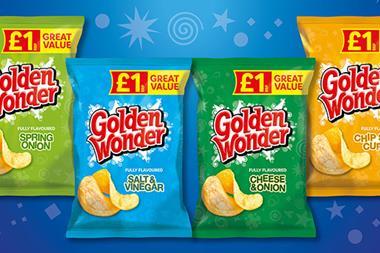


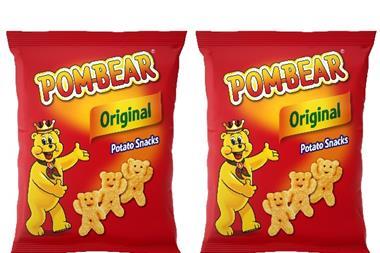
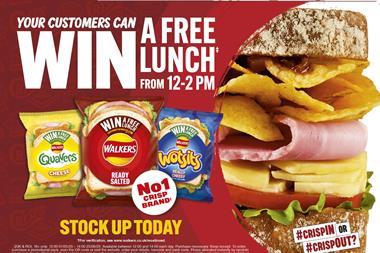
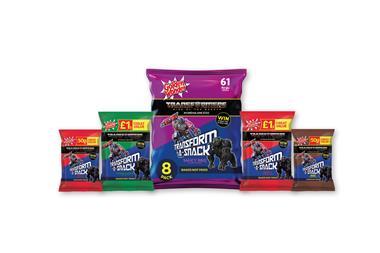


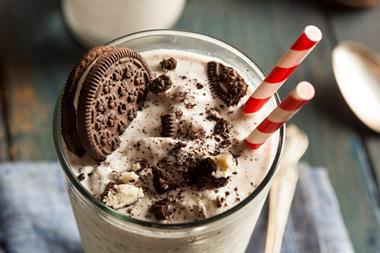

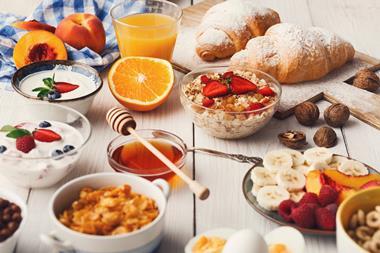
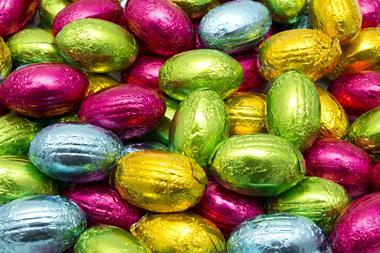
No comments yet